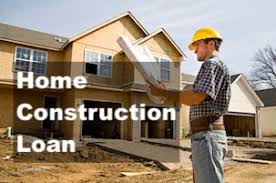Embarking on a construction project, whether it’s your dream home or a commercial venture, requires more than just blueprints and enthusiasm. Managing your finances effectively is crucial to the success of your endeavor. One indispensable tool that can empower you to make informed financial decisions while keeping your budget on track is a construction loan calculator. In this comprehensive guide, we’ll delve deep into the world of construction loans, explore various types of construction loans available, and, most importantly, uncover how to harness the full potential of a construction loan calculator. Whether you’re a seasoned developer or a first-time builder, this guide has all the insights you need.
Construction Loan Calculator
Amortization Schedule
| Month | Balance | Payment | Principal | Interest | New Balance |
|---|
What Is a Construction Loan?
Understanding Construction Loans
A construction loan is a specialized financial product designed to provide funding for the construction of a new building or the substantial renovation of an existing structure. Unlike traditional mortgages, where you receive a lump sum upfront, construction loans disburse funds incrementally, often referred to as “draws,” as the construction progresses. This unique structure requires meticulous financial planning and is where a construction loan calculator comes into play as an invaluable resource.
Key Characteristics of Construction Loans
Construction loans exhibit several distinct characteristics that set them apart from conventional mortgages:
Short-Term Nature: Construction loans are typically short-term loans with a duration of up to 12 months. This brevity reflects the need for timely completion of construction projects.
Higher Interest Rates: One notable feature of construction loans is their relatively high-interest rates. This is primarily because these loans lack collateral during the construction phase, making them inherently riskier for lenders.
Adjustable Interest Rates: Another crucial aspect is that construction loans often have adjustable interest rates. These rates can fluctuate as the prime rate changes, impacting the overall cost of borrowing throughout the loan term.
Average Construction Loan Interest Rate
As of September 25, 2023, the average construction loan interest rate stands at 7.75%. However, it’s essential to note that rates can vary based on factors such as the lender, loan terms, and prevailing economic conditions. These rates are for informational purposes and serve as a reference point for borrowers.
How Do Construction Loans Work?
The Unique Dynamics of Construction Loans
One of the primary distinctions between a construction loan and a conventional mortgage lies in collateral. Unlike mortgages, construction loans lack collateral backing, making them a riskier proposition for lenders. To mitigate this risk, lenders require a comprehensive set of supporting documents that outline the construction project’s nature, a detailed budget, and a strategic plan. This places the onus on borrowers to meticulously plan their entire construction project before seeking loan approval.
The Borrower’s Journey with a Construction Loan
Once a borrower secures approval for a construction loan, they can commence their project. However, the structure of construction loans differs markedly from that of traditional mortgages. In the typical mortgage scenario, borrowers receive the full loan amount upfront and then make periodic payments that encompass both interest and principal repayment.
In contrast, construction loans disburse only portions of the loan directly to the contractor responsible for the construction. These disbursements align with specific phases of the project. For example, funds allocated for the foundation phase are paid out when the foundation work is ready to commence. This draw-based system ensures that the borrower incurs interest charges only on the disbursed amount, reducing initial interest costs.
Construction Loans Process
The Phases of Construction Loan Disbursement
The disbursement of funds in construction loans corresponds to the various phases of the construction project. At each critical stage, an inspection agent representing the lender assesses the progress and releases funds earmarked for the subsequent phase. Key inspection points typically include:
1. Foundation:
At this initial stage, the construction project’s foundation is laid. Once the foundation work is satisfactorily completed, the lender’s inspection agent authorizes the disbursement of funds allocated for this phase.
2. Home Framework:
The next phase involves the construction of the home’s framework. This stage includes erecting the structural framework and framing the walls. Upon successful completion, the lender disburses the predetermined amount for this phase.
3. Roofing:
Roofing is a critical step in the construction process, ensuring the structure is protected from the elements. The lender’s agent evaluates the roofing work and authorizes the release of funds designated for this stage.
4. Finishing:
The finishing stage encompasses interior and exterior finishing work, such as drywall installation, painting, flooring, and the installation of fixtures. As this phase nears completion, the lender disburses the remaining funds to cover these finishing costs.
Determining Loan Repayment
By the end of the construction project, all the required funds for the project will have been disbursed. At this juncture, borrowers face an important decision: whether to repay the construction loan in full or refinance it into a conventional mortgage.
The decision hinges on various factors, including the borrower’s financial situation, long-term objectives, and market conditions. Some borrowers may opt to pay off the construction loan using personal funds or other financing sources. Others may choose to explore mortgage options that facilitate a seamless transition from construction financing to permanent mortgage financing.
Types of Construction Loans
Construction-Only Loan
This construction loan type shares structural similarities with an interest-only loan, culminating in a balloon payment upon maturity. Throughout the construction phase, borrowers make interest-only payments, with the remaining principal amount due in a single payment at the project’s conclusion. While this type of loan provides flexibility, it also imposes a substantial one-time payment at the project’s end. To facilitate repayment, borrowers may decide to secure a mortgage specifically for paying off the construction loan. However, this entails incurring closing costs twice – once for the construction loan and again for the mortgage.
Construction-to-Permanent Loan
The construction-to-permanent loan seamlessly combines construction financing and permanent mortgage financing into a single product. Borrowers initially pay interest-only during the construction phase for a specified duration. Subsequently, they amortize the principal over the remaining loan term. This loan type is particularly attractive to those who intend to obtain a mortgage upon the completion of construction, as it eliminates the need for double closing costs associated with two separate loans.
Owner-Builder Loan
An owner-builder loan adheres to the structure of a construction-only loan. However, in this case, there is no involvement of an external contractor. Instead, the borrower assumes the roles of both builder and project overseer. An owner-builder loan channels financing directly to the owner, who is responsible for overseeing and actively participating in the construction project. While it grants greater control, it may necessitate providing evidence of the borrower’s qualifications to manage the construction. Similar to construction-only loans, borrowers may opt to secure a mortgage to repay the construction loan, incurring closing costs twice.
Home Renovation Loan
While not a traditional construction loan, certain renovation loans can cover small-scale projects or specific components of larger ones. Unsecured renovation loans typically extend up to $20,000, suitable for minor projects like staircases or bathroom renovations. Alternatively, borrowers may explore secured loans such as home equity loans or home equity lines of credit (HELOCs) for more extensive renovations.
Low Down Payment Construction Loan
Conventional construction loans often require a substantial 20% down payment and stringent credit score criteria. However, alternative options, including government-backed programs, aim to broaden access to construction financing. These programs enable lenders to accept borrowers with lower credit scores or down payments as low as 0%. However, they may introduce specific nuances, such as maximum loan limits, income thresholds, or geographic restrictions.
– FHA Construction Loan
The Federal Housing Administration (FHA) administers FHA construction loans with a primary focus on assisting low to moderate-income families in realizing homeownership. Borrowers can secure an FHA construction loan with a minimum down payment of 3.5% or 10% with a credit score as low as 500. Additional requirements include a minimum credit score of at least 500, a maximum debt-to-income ratio of 43%, and designating the property as a primary residence. Borrowers must also engage an FHA-approved builder and fulfill mortgage insurance premium (MIP) payments.
– VA Construction Loan
The Department of Veterans Affairs (VA) guarantees VA construction loans, primarily serving veterans, active military personnel, and their families. VA construction loans offer a unique advantage with a 0% down payment requirement and no maximum loan limit. However, finding VA construction-to-permanent loans can be challenging, and borrowers may initially secure a construction-only loan, subsequently refinancing it into a standard VA mortgage. Additional requisites include a maximum debt-to-income ratio of 41%, possessing a Certificate of Eligibility (COE), designating the property as a primary residence, and engaging a VA-approved builder. VA funding fee payments are also applicable.
– USDA Construction Loan
The United States Department of Agriculture (USDA) administers construction loans through the Rural Development Housing and Community Facilities Program, aimed at enhancing the quality of life in rural areas through affordable financing. The USDA offers various construction loans, including the USDA Single Close Construction Loan, a Construction-to-Permanent loan. This program caters to rural home construction with a 0% down payment requirement, albeit with stringent prerequisites. These include a minimum credit score of 640, a maximum debt-to-income ratio of 41%, the property’s designation as a USDA-designated rural area, and payment of USDA guarantee fees.
Construction Cost
How Do I Estimate Construction Costs?
Estimating construction costs is a critical step in planning your construction project effectively. It involves determining the total expenditure required to build your house. Several factors contribute to the overall construction cost:
– Land:
Acquiring land is often the first step in your construction project. Land costs can vary significantly, ranging from $5,000 for smaller plots to $150,000 or more for larger parcels, contingent upon factors such as square footage and location. To estimate land financing costs, you can utilize a land loan calculator.
– Site Work:
Site work encompasses expenses related to grading, excavation, and other activities not directly tied to the building’s physical structure. Costs for site work can fluctuate between $2,000 and $6,000, dependent on land size and its existing condition.
– Floor Plan:
Designing the layout of your house, including room configurations, bathrooms, and the kitchen, is a crucial aspect of the construction process. Costs for creating a floor plan can range from $2,000 to $5,000.
– Foundation:
The foundation phase involves preparing the ground for construction, including material and labor costs. Depending on the type of foundation required, costs can range from $5,000 to $25,000.
– Framing:
Framing encompasses constructing the outer structure of the house, including framing the walls and providing structural support. Framing costs vary based on the house’s size and the materials used but typically range from $20,000 to $50,000.
– Exterior:
Building the house’s exterior involves covering the entire external surface area. Exterior costs can vary widely, generally falling within the range of $30,000 to $55,000.
– System Installation:
This category covers the installation of crucial systems, including HVAC (heating, ventilation, and air conditioning), electrical, and plumbing. Each of these systems carries a significant cost, with total expenses potentially reaching up to $75,000.
– Interiors:
The interior construction phase involves work within the house, encompassing elements such as flooring, painting, insulation, appliances, and plumbing fixtures. Building the structure and exterior is only one part of the job; substantial time and money must also be allocated to interior work. Costs for interiors depend on material choices and appliance selections, with prices spanning from $50,000 to $150,000.
To estimate construction costs accurately, allocate budgets for each cost category and sum them to obtain a rough estimate.
Is a Construction Loan Harder to Get Than a Mortgage?
Yes, obtaining a construction loan is generally more challenging compared to securing a conventional mortgage. Construction loans are deemed riskier by lenders due to the absence of collateral during the construction phase. Consequently, lenders require a more comprehensive set of documentation, including a well-defined construction plan, project management details, and information about a licensed contractor overseeing the project. Additionally, lenders may impose a larger down payment requirement and higher interest rates compared to mortgages.
However, with proper preparation, a clear understanding of the loan process, and thorough documentation, securing a construction loan is attainable. By aligning your project’s objectives with the right type of construction loan and diligently adhering to the lender’s requirements, you can navigate the intricacies of construction financing successfully.
Construction Loan Calculator
Embarking on a construction project, whether it’s your dream home or a commercial endeavor, is an exciting venture. However, it’s essential to remember that effective financial planning is just as crucial as architectural blueprints and construction schedules. This is where a construction loan calculator comes into play as your trusted financial companion. In this comprehensive guide, we’ll explore the ins and outs of construction loan calculators, uncover how they work, and highlight their significance in your construction journey. Whether you’re a seasoned developer or a first-time builder, understanding construction loan calculator is key to a successful project.
What Is a Construction Loan Calculator?
A construction loan calculator is a powerful online tool that helps you estimate the financial aspects of your construction project. It takes into account various factors, such as loan amount, interest rate, loan term, and construction period, to provide you with valuable insights into your project’s financial feasibility.
How Does a Construction Loan Calculator Work?
Construction loan calculators are user-friendly and require a few essential inputs to provide you with accurate projections. Here’s how they work:
1. Loan Amount:
You start by entering the total amount you plan to borrow for your construction project. This amount typically covers the cost of construction, land purchase (if applicable), and other related expenses.
2. Interest Rate:
Next, you input the interest rate associated with your construction loan. Construction loan interest rates may vary depending on the lender, your creditworthiness, and market conditions.
3. Loan Term:
You specify the loan term, which is the duration of your construction loan. This is the period during which you’ll be making interest-only payments on the loan.
4. Construction Period:
The construction period represents the time it will take to complete your project. This duration is essential as it impacts your interest payments during the construction phase.
5. Draw Schedule:
Some construction loan calculators allow you to input a draw schedule. A draw schedule outlines when and how the loan funds will be disbursed during the construction process. This feature can help you visualize cash flow and budgeting.
Once you’ve entered these details, the construction loan calculator will generate valuable information, including:
– Monthly Interest Payments:
The calculator will provide you with estimates of your monthly interest payments during the construction phase. This is crucial for budgeting and managing your finances effectively.
– Total Interest Paid:
You’ll also get a projection of the total interest you’ll pay over the course of your construction loan. This figure helps you understand the cost of financing your project.
– Amortization Schedule:
Some calculators provide an amortization schedule, which details how your loan balance will change over time. This schedule can be instrumental in long-term financial planning.

Why Are Construction Loan Calculator Important?
Construction loan calculator offer several benefits that can significantly impact the success of your project:
1. Financial Planning:
A construction loan calculator helps you create a detailed financial plan for your project. It allows you to understand the financial implications of your construction loan, enabling you to make informed decisions.
2. Budgeting:
By estimating your monthly interest payments, construction loan calculator aid in budgeting and cash flow management. You can ensure that you have the necessary funds available to cover construction-related expenses.
3. Cost Assessment:
Calculating the total interest paid over the life of the loan helps you assess the overall cost of financing your construction project. This knowledge can influence your choice of loan terms and lenders.
4. Decision-Making:
Having access to accurate financial projections empowers you to make confident decisions regarding your construction project. You can explore different loan options, interest rates, and loan terms to find the most suitable financing solution.
FAQ on Construction Loans
1. What is a construction loan?
- A construction loan is a short-term loan that provides financing for the construction of a new home or the renovation of an existing property. It is different from a traditional mortgage and is specifically designed for construction projects.
2. How does a construction loan work?
- Construction loans are typically provided in a series of advances or draws to cover the various stages of construction. The borrower makes interest-only payments during the construction phase and then transitions to a permanent mortgage once the construction is complete.
3. What is a Construction Loan Calculator?
- A Construction Loan Calculator is a financial tool that helps individuals estimate their monthly payments and costs associated with construction loans. It takes into account loan amount, interest rate, loan term, and other variables to provide accurate payment estimates.
4. How does a Construction Loan Calculator work?
- To use a Construction Loan Calculator, you input details such as the loan amount, interest rate, loan term, and the project’s construction timeline. The calculator then provides an estimate of the monthly payments during the construction phase and the permanent mortgage.
5. What are the key differences between a construction loan and a traditional mortgage?
- Construction loans are short-term loans used to fund construction or renovation projects, while traditional mortgages are long-term loans for purchasing homes. Construction loans have interest-only payments during the construction phase and transition to a permanent mortgage afterward.
6. What are the benefits of using a Construction Loan Calculator?
- Using a Construction Loan Calculator helps individuals plan their construction project by estimating costs and monthly payments accurately. It allows for better budgeting and financial preparation.
7. Can a Construction Loan Calculator help me compare different loan options and scenarios?
- Yes, a Construction Loan Calculator is a valuable tool for comparing different loan options and scenarios. It enables you to experiment with various loan amounts, interest rates, and construction timelines to find the most suitable financing arrangement.
8. What is the typical loan-to-value (LTV) ratio for construction loans?
- The LTV ratio for construction loans varies, but it’s typically around 80%. This means the loan covers up to 80% of the project’s total cost, and the borrower is responsible for the remaining 20%.
9. Are there any fees associated with using a Construction Loan Calculator?
- No, using a Construction Loan Calculator is typically free of charge and accessible online through various financial websites and lenders’ websites.
10. How often should I use a Construction Loan Calculator during the construction project?
You can use a Construction Loan Calculator at different stages of your project, especially during the planning and budgeting phase. It’s a valuable tool to help you understand the financial aspects of your construction loan.





